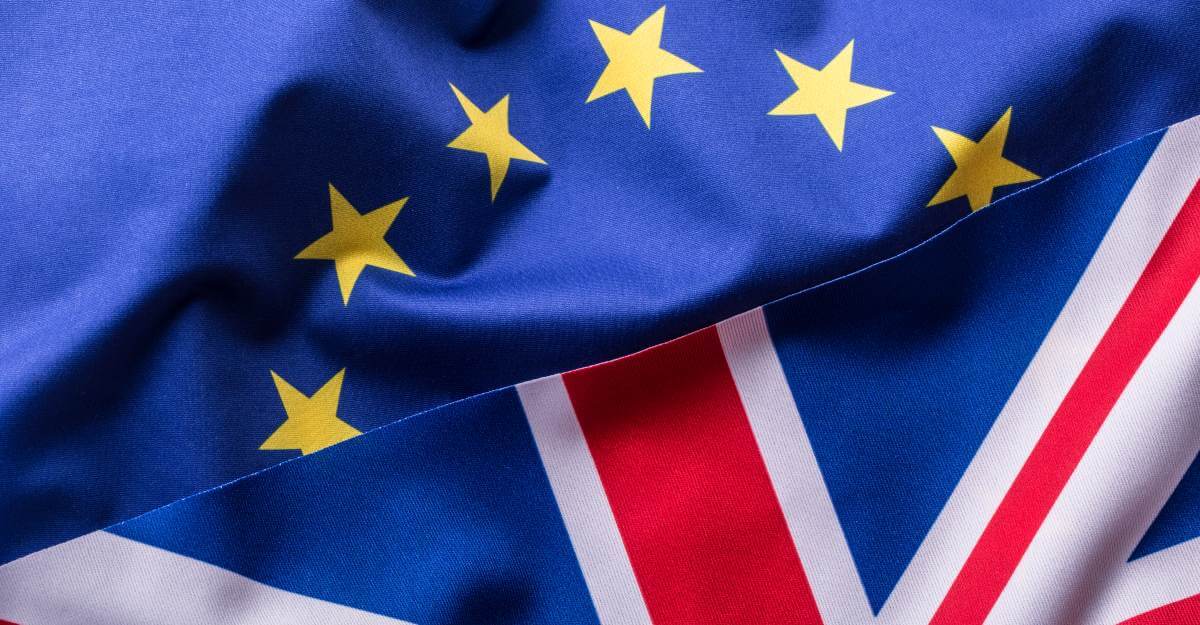Canada Tax Codes Explained - Guide for UK Employers
Check out our guide on Canada tax codes. Get to grips with tax codes by province, federal income tax rates in Canada to help with international employees.

Need to learn more about e-invoicing in Europe? Within the EU and EEA, e-invoicing uses standard digital formats for invoicing, making the process fast and efficient. It’s also mandatory in some countries and for some invoice types, with many countries planning on making electronic invoicing obligatory soon.
This means that if you’re a UK business owner billing B2B customers in Europe, you’ll have to get used to e-invoicing to get ahead of mandatory roll out dates.
This guide covers all you need to know about the EU e-invoicing directive and how it’s being rolled out across Europe.
If you are invoicing overseas, a Wise Business multi-currency account can be a helpful tool to receive payments on your customer's local currency, like Euros.
💡 Learn more about Wise Business
Back in 2014, the EU started on a journey of moving towards e-invoicing, starting with public procurement and similar transactions¹. A roadmap for e-invoicing in Europe was created which asked all EU member states to move to mandatory e-invoicing for public procurement by 2019, with an option to extend the deadline to 2020 on application².
Today, all 27 EU member states use e-invoicing when dealing with government contracts and similar, which makes cooperation across borders much easier. In addition, some countries have moved to e-invoicing for business to business sales as well. A recent report by the EU looking at e-invoicing states that it is still a relevant and useful intervention, which has reduced friction - and that countries need to ensure fragmentation doesn’t result from the increasing move towards B2B e-invoicing³.
Mandatory e-invoicing in Europe can affect UK businesses dealing with European governmental bodies, businesses that export to EU countries, as well as UK companies with European subsidiaries or entities.
Each country of the EU has its own approach to e-invoicing, usually using their own digital processing tool. However, as there’s a European standard for e-invoice formats, the systems are all compatible with each other even where they have different names.
If you’re issuing an invoice to any central, regional and local contracting authorities and entities within the EU you will need to use the local e-invoicing system, or issue a comparable e-invoice which can be accepted by the client. In some countries the obligation for e-invoicing extends to business to business sales as well, which may mean you have to e-invoice even when not dealing with public procurement.
As each country has a slightly different set of rules it’s important to check the local legislation before you prepare your invoice, to make it easier for the client to pay.
Here are a few more common questions and answers on e-invoicing in Europe.
In 2014 the EU passed a directive which has led to mandatory e-invoicing in public procurement and when dealing with government bodies and authorities.
It’s mandatory to issue an e-invoice if you’re billing a public agency or government in most cases within the EU. Member states of the EU are able to also add in local requirements on e-invoicing if they choose to, so some countries also mandate using e-invoices for business invoices too. Check the local requirements in the country you’re working with - there’s a handy reference table below.
Here’s a rundown of the 27 EU member states and where e-invoicing is mandatory at the time of writing⁴:
| Country | Mandatory e-invoicing for receiving and processing: | Mandatory e-invoicing for submitting: |
|---|---|---|
| Austria | Central authorities, regional authorities & local authorities | Economic Operators |
| Belgium | Central, regional and local contracting authorities and entities | Economic operators and suppliers of public bodies of Regional government of Flanders and regional government of Brussels |
| Bulgaria | Central authorities, regional authorities & local authorities | Not informed on European Commission Factsheet |
| Croatia | Central and sub-central authorities and entities | Suppliers of public bodies |
| Cyprus | Central and sub-central authorities and entities | Not informed on European Commission Factsheet |
| Czech Republic | Central, regional and local contracting authorities | Economic Operators |
| Denmark | Central authorities, regional authorities & local authorities | Economic operators, suppliers of public bodies |
| Estonia | Public authorities | Economic operators, suppliers of public bodies |
| Finland | Central, regional and local contracting authorities | Economic operators, suppliers of public bodies |
| France | Central authorities, regional authorities & local authorities | Economic operators, suppliers of public bodies |
| Germany | Central authorities, regional authorities & local authorities, federal, and state contracting authorities | All suppliers to Federal authorities |
| Greece | Central authorities, regional authorities & local authorities | Not informed on European Commission Factsheet |
| Hungary | Central, regional and local contracting authorities | Economic Operators |
| Ireland | Central authorities, regional authorities & local authorities | Not informed on European Commission Factsheet |
| Italy | Central authorities, regional authorities & local authorities, economic operators | Economic operators, suppliers of public bodies |
| Latvia | Central authorities, regional authorities & local authorities | Not informed on European Commission Factsheet |
| Lithuania | Central authorities, regional authorities & local authorities and entities | Economic operators, suppliers of public bodies |
| Luxembourg | All public sector bodies, central authorities, regional authorities & local authorities | Economic operators, suppliers of public bodies |
| Malta | Central authorities, regional authorities & local authorities | Economic Operators |
| Netherlands | Central government agencies, local government and all other contracting authorities. | Suppliers to Dutch central government |
| Poland | Central authorities, regional authorities & local authorities | Planned to become mandatory for all B2B invoices, from mid-2024 (subject to review) |
| Portugal | Central authorities, regional authorities & local authorities | Economic operators, suppliers of public bodies |
| Romania | Central authorities, regional authorities & local authorities | Suppliers of public bodies |
| Slovakia | Central authorities, regional authorities & local authorities | Not informed on European Commission Factsheet |
| Slovenia | Central authorities, regional authorities & local authorities | Suppliers of public bodies |
| Spain | Central authorities, regional authorities & local authorities | Suppliers of public bodies, for invoices higher than 5,000 EUR |
| Sweden | All public sector contracting authorities | Suppliers to the public sector |
The EU directive on electronic invoicing in public procurement was agreed in 2014, and member states were given until 2020 to implement this system. Under this directive, businesses dealing with governments and similar public bodies are obliged to use e-invoicing. This covers B2G invoices in things like public procurement, contract awards and invoicing in sectors like water and energy.
An e-invoice is a digital invoice which is in a standard format allowing it to be read by a computer. It’s mandatory to use e-invoices in some countries and for some transaction types, but it’s also a method preferred by many businesses as it’s easy, efficient and limits the chance of human error creeping in when billing.
Wise Business can help UK businesses, freelancers and sole traders get paid by customers in multiple currencies, with low fees and the mid-market exchange rate.

Your Wise Business account comes with local account details to get paid like a local in Euros and other European currencies like RON and HUF, just as easily as you do in Pounds.
All you need to do is pass these account details to your customer, or add them to invoices, and your customer can make a local payment in their preferred currency. You can also use the Wise request payment feature to make it even easier and quicker for customers to pay you.
Get started with Wise Business 🚀
No matter where in Europe you do business, e-invoicing is important. It may be a mandatory requirement depending on where you trade and the type of work you do - but even where it’s not mandatory yet, it’s becoming a common and popular approach to billing which your customers may well expect from you. Use this guide to understand a bit more about how e-invoicing works in the EU and EEA, and why not check out Wise Business for an easy to use international account with low fees and mid-market exchange rates - ideal when invoicing overseas.
Sources used in this article:
Sources last checked March 27, 2024
*Please see terms of use and product availability for your region or visit Wise fees and pricing for the most up to date pricing and fee information.
This publication is provided for general information purposes and does not constitute legal, tax or other professional advice from Wise Payments Limited or its subsidiaries and its affiliates, and it is not intended as a substitute for obtaining advice from a financial advisor or any other professional.
We make no representations, warranties or guarantees, whether expressed or implied, that the content in the publication is accurate, complete or up to date.

Check out our guide on Canada tax codes. Get to grips with tax codes by province, federal income tax rates in Canada to help with international employees.

Looking to scale your business in Scotland? Check out this guide to business grants in Scotland from start up funding to government business grants and more.

Seeking funding for your business? This guide signposts what grants are available for small businesses in the UK and tips to help ensure application success.

Looking to scale with a business grant? This guide outlines opportunities for business grants in Wales - from start up funding to Welsh government grants.

If you’re a UK employer with employees in Germany, check out our guide on German tax codes. Learn about tax laws in Germany, income tax brackets and more.

Considering starting a business in Croatia? Read this guide on Croatia company registration. Learn how Wise could help you save when doing business in Croatia.